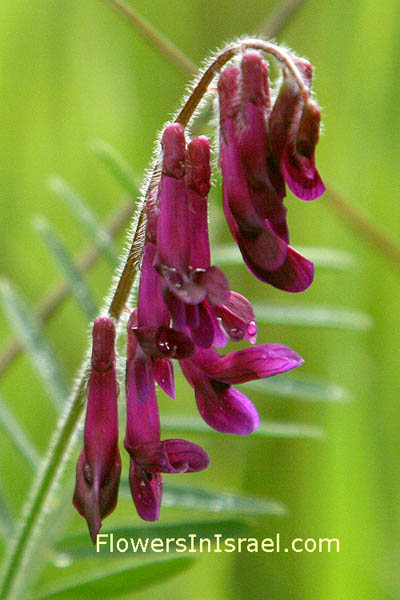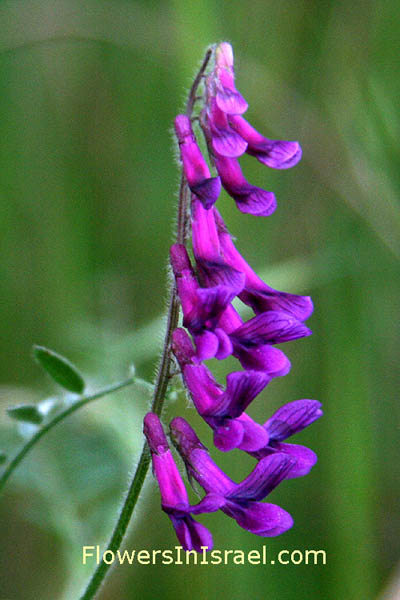Hebrew: ביקיה שעירה , Arabic: البيقية الموبرة
| Scientific name: | Vicia villosa Roth | |
| Synonym name: | Vicia dasycarpa Ten. | |
| Common name: | Winter vetch | |
| Hebrew name: | ביקיה שעירה | |
| Arabic name: | البيقية الموبرة | |
| Plant Family: | Papillionaceae, פרפרניים |

|
| Life form: | Stems | |
| Stems: | Stems 50-200 cm in length; usually pubescent (covered with soft woolly fuzz) | |
| Leaves: | Alternate, compound | |
| Flowers: | Violet | |
| Fruits / Pods: | Legume; oblong, flattened, obliquely beaked, 2 to 3 cm long and 7 to 10 mm wide; dark to light straw colored, and can be pubescent or glabrous; seeds, smooth, round, black | |
| Flowering Period: | February, March, April, May | |
| Habitat: | Batha, Phrygana | |
| Distribution: | The Mediterranean Woodlands and Shrublands, Semi-steppe shrublands | |
| Chorotype: | Euro-Siberian - Med - Euro-Turanian | |
| Summer shedding: | Ephemeral |

Derivation of the botanical name: Vicia, vetch; the classical Latin name for these herbs, perhaps related to vincire to bind. villosa, shaggy, hairy. dasycarpa , Greek dasy δασυϛ, shaggy, thickly, markedly hairy; carpa, karpos, fruit; with shaggy fruits. vetch, late 14c., from Old North French, veche, variant of Old French vece, from Latin vicia. The Hebrew name: בקיה, bakia, Post Biblical Hebrew: vetch; Greek: bikion, from Arabic: بيقية (bikia) or باقية (bakya). Indo-European
|